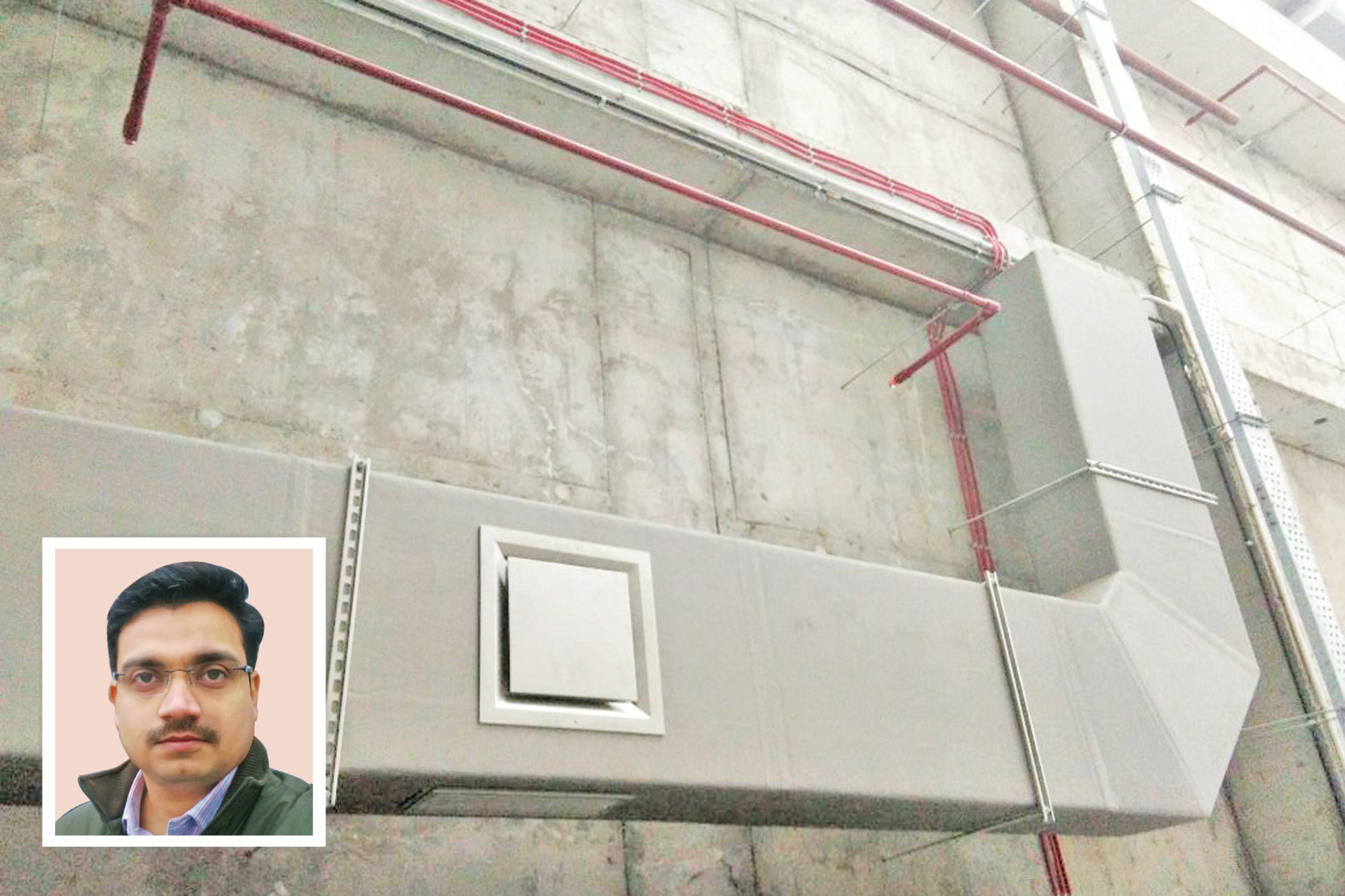Non-metallic duct boards: A futuristic solution for HVAC
By Edit Team | November 14, 2017 6:50 am SHARE

Non-metallic duct system is very lightweight, easy to make and install, but require professional training and skill set for installation and application.
Biswajit Roy, Sr. Manager Building Solutions – Domestic & International, U.P. Twiga Fiberglass Ltd
Twiga is a major manufacturer of glass wool insulation in India having expertise of supplying domestic and export customers with world-class products for thermal and acoustic insulation. The company has introduced high performance non-metallic duct boards for HVAC application. With approved accessories, it can be used as a value-added solution, alternative to the metal duct with insulation as well as mechanical room acoustic, informs Biswajit Roy, Sr. Manager Building Solutions – Domestic & International, U.P. Twiga Fiberglass Ltd.
Maintaining comfortable condition at built space with minimum energy consumption is always a challenge in HVAC design. The rising demands for energy efficient solutions bring lots of technological breakthrough on the table. One such futuristic solution is non-metallic duct board system. Sheet metal ducts with externally applied thermal insulation or internally applied acoustic insulation are most common in HVAC industry. According to Roy, “In the last few years, non-metallic duct system has gained popularity because of their inherent merit like least leakage rate, better thermal and acoustic insulation.”
Easy to make and install
Duct boards are pre-laminated, long insulation boards that are converted to HVAC ducts by using special hand tools. The edges are specially designed to form ship-laps when joined together. It helps to connect two duct module length wise. Ship-lap joints make the ducts airtight resulting in higher thermal efficiency. The conversion from board to straight duct is the most important part of the fabrication and need grooving tools. Once straight duct modules (duct piece) are made several modules can be joined to have longer duct pieces or network-elements. Straight ducts then can be transformed to elbow, offset, r-joint, triple joint etc. By joining the module one to another whole duct network can be created as per the plan. All the applications are done at site with the help of approved tools, accessories by trained installers. “Non-metallic duct system is very lightweight, easy to make and install, but require professional training and skill set for installation and application,” observes Roy.
Non-metallic duct system conforms to all important criteria like thermal, acoustic, air-flow velocity, frictional loss, erosion and pressure etc. pertaining to most of the comfort air conditioning application.
Unique features or advantages
• Excellent thermal insulation value: R- 0.72 sq.m. K/W
• Excellent acoustic with NRC more than 0.8
• Better air tightness: 1 per cent or less leakage against that of 5 per cent as industry standard
• High speed installation with least wastage: 4-5 trained installers can make and install 70 sq. metre duct boards in a day (8 hr).
• Space saving: Duct sizes can be optimised because of better thermal resistance and excellent noise absorption.
• Better aesthetic: Attractive and smart finish. It can be installed without false ceiling. Various colour options are also available for duct boards.
• Fire safe: Made of non-combustible fibreglass insulation material at core – hence completely fire safe.
Potential application areas
All HVAC interior duct network can be done with non-metallic duct system. This is more popular for all type of commercial and residential spaces where ceiling height is a constraint and duct system need to adapt complex site condition or limitations.
Limitations
• No external ducts should be made with it.
• Vertical ducts more than 3-metre heights need reinforcement.
• Pressure limitation is up to 800 Pa.
• Air velocity is 18 metres per sec.
• External temperature: mainly for AC ducts- up to 95 C ambient.
• Service temperature: up to 65 C inside air temperature.
For more details, visit www.twigafiber.com
Cookie Consent
We use cookies to personalize your experience. By continuing to visit this website you agree to our Terms & Conditions, Privacy Policy and Cookie Policy.




































-20240213125207.png)

























